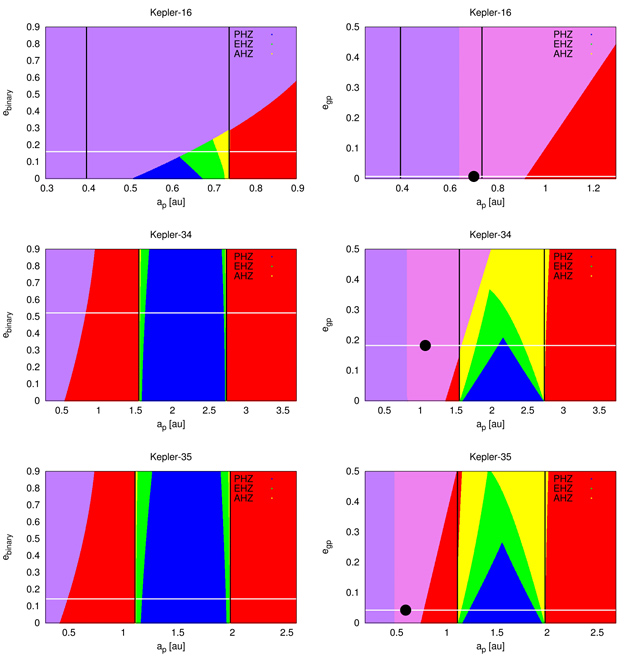Circumbinary Habitable Zones In The Presence Of A Giant Planet

Determining habitable zones in binary star systems can be a challenging task due to the combination of perturbed planetary orbits and varying stellar irradiation conditions.
The concept of “dynamically informed habitable zones” allows us, nevertheless, to make predictions on where to look for habitable worlds in such complex environments. Dynamically informed habitable zones have been used in the past to investigate the habitability of circumstellar planets in binary systems and Earth-like analogs in systems with giant planets.
Here, we extend the concept to potentially habitable worlds on circumbinary orbits. We show that habitable zone borders can be found analytically even when another giant planet is present in the system. By applying this methodology to Kepler-16, Kepler-34, Kepler-35, Kepler-38, Kepler-64, Kepler-413, Kepler-453, Kepler-1647 and Kepler-1661 we demonstrate that the presence of the known giant planets in the majority of those systems does not preclude the existence of potentially habitable worlds.
Among the investigated systems Kepler-35, Kepler-38 and Kepler-64 currently seem to offer the most benign environment. In contrast, Kepler-16 and Kepler-1647 are unlikely to host habitable worlds.
Nikolaos Georgakarakos, Siegfried Eggl, Dobbs-Dixon
Comments: Accepted for publication in Frontiers in Astronomy and Space Sciences
Subjects: Earth and Planetary Astrophysics (astro-ph.EP)
Cite as: arXiv:2103.09201 [astro-ph.EP] (or arXiv:2103.09201v1 [astro-ph.EP] for this version)
Submission history
From: Nikolaos Georgakarakos Ph.D.
[v1] Tue, 16 Mar 2021 17:13:18 UTC (3,963 KB)
https://arxiv.org/abs/2103.09201
Astrobiology








